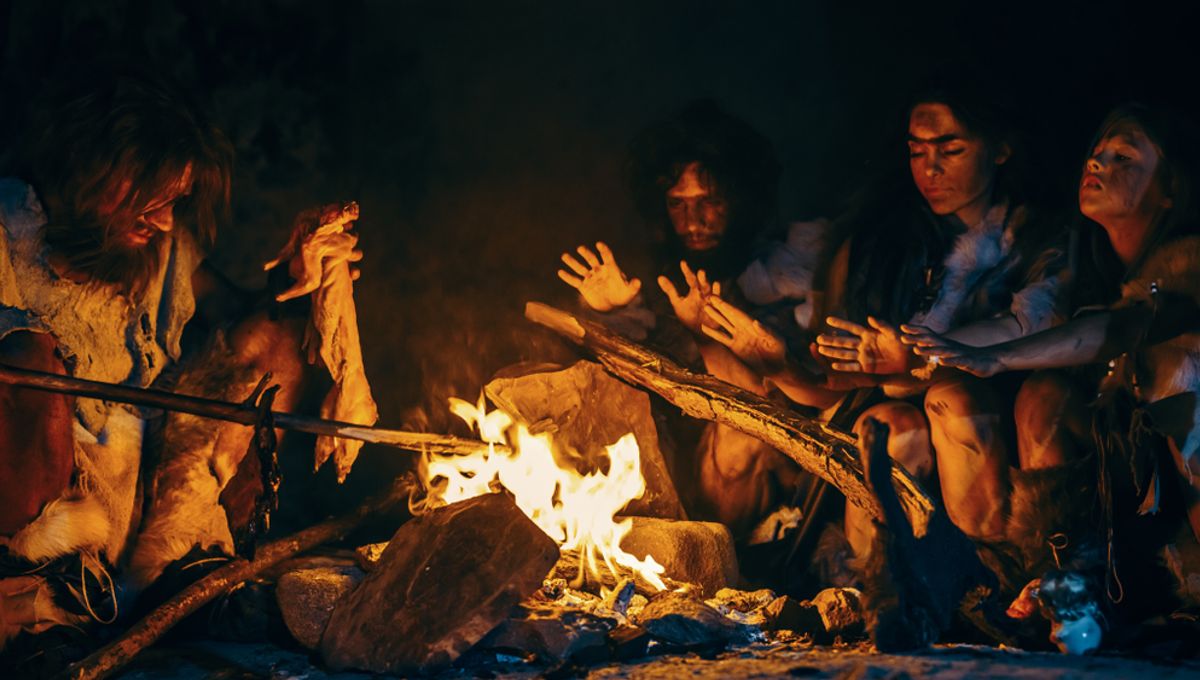
Neanderthals were just as intelligent as Homo sapiens – that’s the conclusion of research that, based on more than 20 years worth of excavations, demonstrates our ancient cousins knew how to control fire and used it to cook food.
It’s perhaps not that surprising given what we already know about the extinct hominins. In the last few weeks alone we’ve found out that they hunted lions and used their pelts, and that they made their own glue.
“This [new finding] confirms our observations and theories from previous studies,” Diego Angelucci, an archaeologist at the University of Trento and co-author of the study, said in a statement.
“Neanderthals were capable of symbolic thought, could create artistic objects, knew how to decorate their bodies using personal ornaments, and had an extremely varied diet. Add to that that, based on our findings, we can say with certainty that they habitually ate cooked food. This ability confirms that they were as skilled as the Homo sapiens who lived millennia later.”
It was largely agreed among archaeologists that Neanderthals could use fire, but not neccessarily that they were able to make it, let alone utilize it for cooking, heating, and defense.
“In this study we demonstrate that there is no doubt that Neanderthals could make a fire and that fire was a central element in their daily life,” Angelucci added.
The team studied the remains of fires found in the Gruta de Oliveira, Portugal, one of the most important archaeological sites from the Middle Palaeolithic in Europe. Over 20 years between 1989 and 2012, a series of excavations was conducted in the cave network, the oldest layers of which date back to around 120,000 years ago, while the most recent to about 40,000. It is thought that Neanderthals inhabited the caves between 100,000 and 70,000 years ago.
Among a treasure trove of artifacts and remains, the researchers were drawn to traces of hearths that had been built and used intentionally. They discovered around a dozen, filled with remains.
“We found burnt bones, burnt wood and ash remains,” said Angelucci. “And the rock underneath has been reddened by the heat: this is a crucial detail because it tells us that the structure is in a primary position. And it has always been there.”
From this, they draw the conclusion that the cave’s inhabitants had mastered fire and used it to cook their food.
“Fire is a fundamental element in their daily lives. It makes the place comfortable and helps socialization. It gives back that basic idea of ‘home’ that perhaps could also apply to them,” Angelucci continued.
In addition, the team were able to decipher what a Neanderthal diet might have looked like, and even what cooking techniques they might have favored. In the hearths, they found the remains of goats, deer, horses, aurochs (extinct bulls), rhinos, and turtles, suggesting that, these Neanderthals at least, had a taste for meat.
It remains a mystery how they started these fires, although Angelucci has some ideas: “Perhaps they did as in Neolithic times, striking flint rocks against another rock to throw sparks on a tinder, such as a dry nest for example.” However, no evidence has been found of this.
When the team compared their findings from the Gruta de Oliveira with other sites in the area that were occupied much later, likely by Homo sapiens, they “found no difference: they lived in the caves in similar ways,” Angelucci concluded.
“Their skills are also a sign of intelligence. They did not belong to different species, I would say that they were different human forms.”
The study is published in PLOS ONE.
Source Link: Sneak Peek Into Neanderthal Cooking Habits Reveals They Were Just As Intelligent As Homo Sapiens